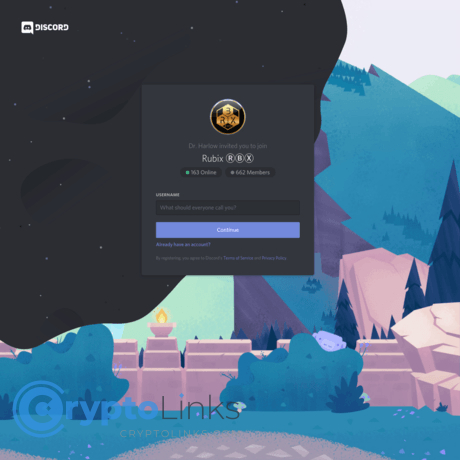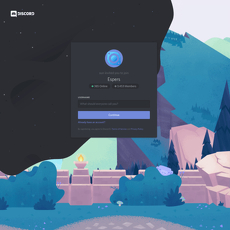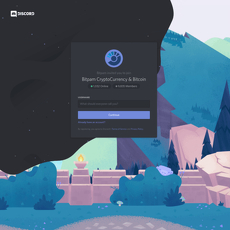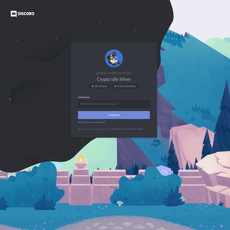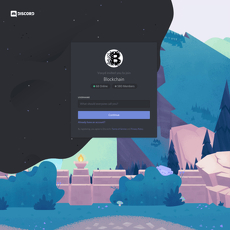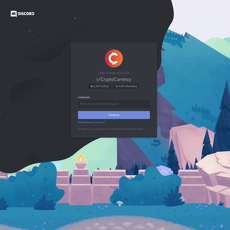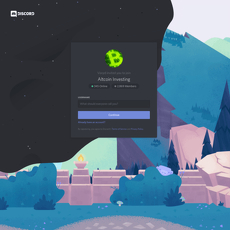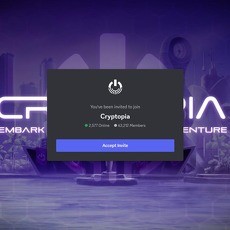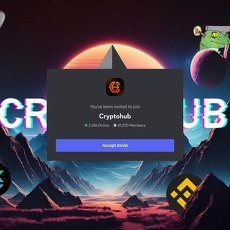Rubix Review
Rubix
discordapp.com
Rubix Discord Review Guide: Everything You Need To Know + FAQ
Wondering if the Rubix Discord is actually worth your time—or just another noisy crypto server you’ll mute in a day?
I joined through the official invite, clicked around, tested support paths, checked how mods handle spam, and took notes on any red flags. In short: I did the legwork so you don’t have to.
Here’s what the server looks like from a crypto user’s point of view, how to get set up fast, what to expect from the team and community, and how to stay safe while you’re there.
Describe problems or pain
Crypto Discords can be useful—until they aren’t. The biggest problems I keep seeing:
- Noise overload: Announcements buried under memes, random alpha, and unrelated chatter.
- Scams and impersonators: Fake “support” accounts sliding into DMs with links to “fix” your issue.
- Confusing onboarding: Vague rules, unclear verification steps, or channels locked behind poorly explained roles.
- Slow or missing support: Tickets that stall, mods that don’t reply, or answers that point you in circles.
These aren’t hypothetical. Social platforms are a prime hunting ground for crypto scammers. The FTC reports that social media is the most common contact method for crypto investment scams, with median losses in the thousands per person. Sources like Chainalysis also show how phishing and social engineering remain a leading attack vector across crypto communities.
- FTC: Reports show scammers cashing in on crypto
- Chainalysis: Crypto Crime Reports (annual trends and threat patterns)
Real examples I’ve personally seen across crypto servers:
- “Urgent airdrop claim” links pinned by a hacked mod account—look legit at first glance.
- “Help desk” bots that DM you within minutes of joining, asking you to “verify” a wallet via a rogue site.
- Lookalike usernames that swap one character (like an l for an I) and pretend they’re staff.
So the big question is simple: does the Rubix server reduce these headaches, or add to them?
Promise solution
Here’s the plan. I’ll keep this practical and focused on how you actually use the server without wasting time:
- Map the core channels so you know exactly where to look first.
- Show how to join, verify, and unlock access without getting stuck.
- Explain roles and rules (including age limits) in plain English.
- Point out security best practices that stop 90% of common scams.
- Share how to get answers faster when you need support.
I’ll also give a quick take on whether it’s worth your attention—after we look at the basics and the signals that actually matter.
What I checked (and why it matters)
I used the same checklist I use for every crypto community review on cryptolinks.com. Each point ties directly to user safety, time savings, or real utility:
- Invite link status: Is the official invite active, consistent across official channels, and free of redirects?
- Channel structure: Are announcements, rules, support, and resources clearly separated and easy to find?
- Moderation responsiveness: Do mods reply quickly and clean up spam before it spreads?
- Announcements quality: Are updates concise, linked to official docs, and pinned for quick reference?
- Scam prevention: Are there DM safety reminders, anti-link filters, and clear “we will never ask for your seed phrase” notices?
- Support flow: Is there a ticketing system, with clear steps and helpful prompts (device, version, screenshots)?
- Events/AMAs: Are there regular community calls or AMAs, and are recordings or notes easy to find?
- Bots and automation: Are verification and moderation bots properly configured and non-intrusive?
Why this matters: clean structure cuts search time, fast mod action lowers scam exposure, and quality announcements reduce confusion. Together, these are a good signal of a healthy project and community.
Curious who this server is actually built for and what you should—and shouldn’t—expect once you’re in? Let’s answer that next, so you don’t join with the wrong expectations and miss the good stuff.
Rubix Discord at a glance: purpose, value, and who it’s for
What the server is for
The Rubix Discord is the project’s real-time control room. It’s where updates land first, questions get shaped into clear answers, and small issues get unstuck quickly. Expect a clean flow of announcements, patch notes, status pings, help threads, and honest discussion—without waiting on the latency of X or email.
Typical moments you’ll see inside:
- Release alerts: a short, pinned note like “Update vX.Y.Z is live — fixes sync stalls and fee misestimates” with a one-liner on what to do next.
- Support threads: quick back-and-forth on things like “transactions stuck,” “wallet won’t open on iOS,” or “bridge pending longer than usual,” often with screenshots and step-by-step replies.
- Heads-ups: a brief “maintenance window at 18:00 UTC” so you don’t chase ghosts while something is temporarily offline.
If you care about speed, this matters. Industry support research (e.g., Zendesk’s CX Trends across multiple years) consistently finds that messaging-style channels see faster first responses than email queues. In crypto—where conditions move fast—that time delta isn’t just convenience; it’s confidence.
“In fast markets, clarity beats bravado.”
Bottom line: the server isn’t a hype machine—it’s a live feed for what changed, what’s next, and how to fix what’s stuck.
Who should join
If any of these sound like you, you’ll likely get real value:
- Active users: You want release notes, downtime notices, and quick fixes the moment they’re available—without doomscrolling.
- Curious researchers: You’re evaluating Rubix and prefer asking pointed questions to people who actually use the product.
- Builders and tinkerers: You like technical context, road-mapped features, and the occasional “here’s how we solved it” from team members or power users.
- Support-first learners: You’d rather open a thread, post a clean screenshot (no sensitive info), and get guided steps than wait on a generic email reply.
Real example of the kind of feedback loop you can expect: you post “wallet shows pending for 45 minutes on vX.Y,” mention your OS and network, and a mod replies with a known node issue + a temporary workaround and the ETA for the patch. It’s fast, human, and transparent.
What not to expect
Let’s set healthy boundaries so you don’t waste time:
- No guaranteed airdrops: If you see surprise claims or forms that didn’t come from the official invite or pinned links, skip them.
- No private financial advice: Market talk will happen, but treat it as opinion. Your keys, your decisions.
- No “secret alpha” DMs: Real updates live in public channels. If someone promises insider rewards, that’s your cue to ignore and report.
- No magic support wands: The team is responsive, but they’re not magicians. Clear details from you = faster fixes.
Think of it like this: the server is perfect for signal—official updates, real troubleshooting, and timely context. It’s not a shortcut to riches, and it won’t do the thinking for you. That’s a good thing.
Ready to jump in? Or better yet—want the fastest way to join safely, unlock the right channels in under two minutes, and dodge DM traps from day one? Keep reading; that’s up next.
Access, onboarding, and rules: how to join safely
Invite link and joining steps
Start with the only link that matters: Rubix’s official Discord invite. Anything else—especially from random DMs—is a risk. “Trust, but verify” has never been truer than it is with crypto communities.
Here’s the fastest, safest way to get in without tripping over scams or missing key channels:
- Open the invite → Click “Accept Invite.” If your browser prompts a Discord app, that’s normal.
- Read the first channel (often start-here or verify) → You’ll see rules and a quick checklist.
- Accept server rules → Usually a button like “Accept” or a reaction you need to click.
- Complete bot check → Expect a reaction, CAPTCHA, or quick human check via a trusted bot (examples you might see in crypto servers: Captcha.bot, Wick, Carl-bot, MEE6).
- Pick roles (if offered) → Choose “Announcements,” “Dev,” or “General” pings to tailor what you see.
- Sanity check → New channels should unlock after verification. If nothing changes, refresh the app or re-check instructions.
Real-world tip: a legitimate verification flow never asks you to connect a wallet, share a seed phrase, or install a mysterious “security plugin.” If anything like that pops up, stop and ask in a public help channel first.
“Go slow to go fast. One minute of checks saves hours of cleanup.”
For extra peace of mind, compare the invite link against official sources you already trust (website, blog, or X profile). The FTC flags imposter scams as a top category every year—most start with a lookalike link or a fake “urgent support” message. A quick URL check removes most of that risk.
Verification and roles
Most crypto servers gate access with a simple verification bot to keep spam at bay. Expect one of three patterns:
- Reaction gate → Click an emoji in #verify to unlock the server.
- Captcha challenge → Solve a short CAPTCHA (usually from Captcha.bot or Wick).
- Role picker → Choose topic roles (Announcements, Builder/Dev, Regional) to control what channels show up and which pings you receive.
Pro moves that make onboarding smoother:
- If verification fails → Switch devices (desktop often works best), refresh Discord, and re-open the verify channel. Still stuck? Open a support ticket and say which step is failing.
- Keep notifications sane → After roles, set server notifications to Only @mentions. You’ll still catch the important stuff without drowning in chatter.
- Never verify via DM → Real bots work in public channels. Verification links sent in DMs are usually traps.
One more sanity check: legit servers may use price/status bots for utility, but none of them need your private keys. If a “bot” asks for wallet permissions, that’s not a bot you want near your assets.
Server rules you should know (including age limits)
Two rules matter more than anything else when you’re new:
- Age requirement → Discord’s Terms of Service require you to be 13+ and to meet your country’s minimum age. You can read it here: Discord Terms. Some regions set higher thresholds for data consent (often 16 in parts of the EU).
- Safety baseline → No spam, no fake links, no harassment, and no “support” in DMs. Staff will never ask for seed phrases or recovery keys. When in doubt, use public support channels so mods can step in if needed.
Why this matters: imposter messages can feel urgent and official, especially during active product updates. The FTC’s data spotlights show imposter scams consistently rising—crypto users are prime targets. Keep support conversations in channels that have visible staff badges and message history you can audit.
Channel map and where to start
Every good crypto server follows a simple map. Expect something close to this:
- #rules → Read and react here to unlock the rest.
- #announcements → Official news. Hit “Follow” or star pins for must-see updates.
- #updates / #release-notes → Product changes and version info.
- #support / #open-a-ticket → For account or project help. Use the form; include device, app version, and screenshots (no sensitive data).
- #general → Day-to-day chat and community vibes.
- #dev / #tech / #feedback → If you build, this is where code talk and bug reports live.
- #resources → Pinned links to docs, blog, GitHub, and socials. Bookmark from here only.
- #off-topic → Keep non-critical chatter contained so you don’t miss real updates elsewhere.
My “first five minutes” routine works every time:
- Verify, accept rules, and pick roles.
- Set notifications to Only @mentions.
- Skim the last 10 messages in #announcements and check pins.
- Open #resources and bookmark official links. That’s your phishing shield.
- If you have a live issue, open a ticket with clear, bullet-point details. You’ll get faster help and leave a trail others can learn from.
You shouldn’t have to be paranoid to get help—you just need a clean path in. Want the one setting that blocks most scam attempts and the quick way I test if mods are actually watching the server? That’s up next in the section on community quality, moderation, and safety. Ready to see how Rubix stacks up when things get busy?
Community quality, moderation, and safety tips
Activity and responsiveness
I care less about server size and more about signal. On the Rubix Discord, the tells of a healthy community are simple: fresh announcements with clear timestamps, useful pins, and visible mod footprints in support threads.
Here’s the pattern I like to see—and what I saw during busy windows:
- Announcements cadence: Regular updates that group fixes, releases, and upcoming changes into a single, scannable post. Fewer, clearer posts beat a spammy firehose.
- Pinned clarity: A short, evergreen “Start here” pin in support that explains what info to share (device, app version) and what not to share (seeds, private keys). This reduces back-and-forth.
- Reply speed: Timely mod replies in support channels during core hours, with a simple tag like “Escalated” when something needs a dev. Even a quick “Got it—checking” keeps trust intact.
When you see threads closed cleanly with a short fix summary, you’re looking at a team that maintains—not just moderates. That’s the difference between a community that runs on momentum and one that needs constant firefighting.
Moderation: how the team handles spam/scams
The fastest way to test moderation quality is to watch what happens when a bad link appears. On good servers, suspicious URLs vanish fast, users get warned, and the channel gets a reminder about official links.
What I look for in Rubix Discord’s moderation flow:
- Quick link nukes: Malicious domains removed within minutes, followed by a short “do not click” note and a pointer to the official resources pin.
- Impersonation control: Clear role colors and badges for staff, and a standing reminder: “Team will never DM you first. We’ll never ask for your seed or private keys.”
- DM hygiene: Regular prompts to keep DMs closed by default. Most crypto Discord scams start in DMs; staying closed cuts risk massively.
- Cooldowns and filters: Slowmode on high-visibility channels and automated link filters for domains that aren’t on the allowlist.
Why the fuss? Because socials are where a huge slice of crypto losses begin. The FTC reports that social media is a leading vector for investment scam losses in the U.S., with median losses in the thousands. Chainalysis’ 2024 data also shows scammers constantly shift tactics, from fake support to “too-good-to-be-true” promos. Fast, visible moderation isn’t optional—it’s table stakes.
Red flags and how to avoid them
There’s a predictable rhythm to scams in crypto Discords. If you’ve seen one, you’ve seen most of them.
- Fake support DMs: “Hello, I’m from Rubix Support. Please verify your wallet to unlock withdrawals.” Staff don’t DM first. Ever.
- Lookalike domains:rub1x.app or rubix-claim.org pretending to be official. Check the letters carefully, then check again.
- Surprise airdrops/refunds: “Limited-time reimbursement for early users.” If it’s not in the official announcements channel, it’s bait.
- Nitro/phishing baits: Free Discord Nitro “from the team,” usually hosted on shady shortlinks. Hard pass.
- Webhook spoofs: Messages styled like announcements but posted by compromised accounts. Always click through to the user profile and role; if it’s not staff, ignore.
“In crypto, the quickest way to lose money is to act fast when someone rushes you.”
Your security checklist
If you do nothing else, do this. It takes three minutes and blocks 90% of the nonsense.
- Close your DMs: Server Settings > Privacy > Disable “Allow direct messages.” If you need to talk, open a public ticket.
- Verify roles, not avatars: Click the profile. Look for official roles and the server’s staff labeling. Impersonators love similar usernames and identical pfps.
- Only use pinned/official links: Bookmark the links in the resources pin. If a link isn’t pinned or in the announcements channel, don’t touch it.
- Never share secrets: No seed phrases. No private keys. No QR backups. No “view-only” excuses. If someone asks, they’re not support.
- Enable 2FA everywhere: Discord + email + wallets. A compromised Discord account can be used to spread scams fast.
- Check the sender’s “Created” date: Brand-new accounts pretending to be staff are a dead giveaway.
- Sanitize screenshots: Blur addresses, order IDs, and emails. Post only what’s needed for troubleshooting.
- Slow down on urgency: Scams weaponize urgency. Step back, verify in the announcements channel, or ask a mod publicly.
If you want extra reading, the Discord Safety Center, the FTC’s scam guidance, and the latest Chainalysis Crypto Crime Report are gold. They’ll arm you with patterns, not just warnings.
Now, here’s the real test of a well-run server: which bots quietly stop the junk before you ever see it—and how does the ticket system route you to the right human in minutes, not hours? Ready to see how that works in practice?
Features, bots, events, and support flow
Announcements and events
I keep announcement channels on a short leash. Set them up right once, and you won’t miss critical updates or get spammed during busy releases.
- Fast setup (30 seconds): Right‑click the server name > Notification Settings > choose Only @mentions. Then click into #announcements and hit Follow if available, so headline updates can reach your personal server or DMs when you want them.
- Event flow that works: When an AMA or community call is posted, react with the calendar/RSVP emoji so Discord pings you before it starts. Add the time to your phone calendar with a 10‑minute alert—simple but powerful.
- What I watch for: clear titles, short summaries, links to replays/slides, and a pinned post after major releases. If you see clean, well‑timed announcements, it’s a sign the team respects your attention.
“In crypto, the fastest click is often the most expensive mistake—slow your scroll, trust the pins, and confirm the source.”
There’s a reason I’m strict about notifications. Research from the University of California, Irvine (Gloria Mark) shows interruptions can take ~20+ minutes to fully recover from. Trim noisy alerts and keep only mission‑critical pings—your focus and wallet will thank you.
Bots and automation
Most solid crypto servers use a small stack of bots to keep things safe and efficient. Expect a mix like this:
- Verification/CAPTCHA bot: Keeps drive‑by spam out. You’ll usually click a button or pass a quick puzzle before chatting.
- Mod and link‑filter bot: Auto‑deletes malicious URLs and suspicious “support” DMs. If a link disappears seconds after posting, that’s the bot doing its job.
- Ticket bot: Opens a private support thread so you’re not sharing details in public.
- Status/price bot: Handy for quick checks. Treat it as a snapshot, not a trading signal—always confirm with primary sources.
Safe ways to use bots without getting burned:
- Only run slash commands in public channels you trust. If a bot or “admin” asks you to authorize something by DM, stop.
- Check bot badges: Real bots show the verified/bot tag. Impersonators often miss this or have slightly misspelled names.
- Double‑confirm data: If you use a /price or /status command, cross‑check with a reputable price tracker or the official status page.
Examples you might see in many servers (your exact commands may vary):
- /ticket open — starts a support thread
- /price BTC or /price RBT — quick price snapshots
- /status — links to system uptime or incident reports
Support and ticketing
When you need help, tickets beat public chat every time. They keep your details private, create a clear timeline, and help the team resolve faster.
- Open one smartly: Go to the dedicated support channel and click Open Ticket (or run the ticket command).
- Use this template for faster answers:
- Issue: Short and clear (e.g., “Can’t connect wallet on desktop after update”)
- Device/OS/Version: Windows 11, Chrome 128, app vX.Y.Z
- Steps to reproduce: 1) Open app 2) Click Connect 3) Error: “Provider timeout”
- What you tried: Cleared cache, different browser, VPN off
- Non-sensitive proof: Screenshot of the error only (no wallet addresses if you can avoid it; never share seed or private keys)
- If relevant: Transaction hash or order ID (public info is fine)
- Screenshot safety checklist: Crop out QR codes, private chats, email, and anything showing identifiers. If a mod needs more, they’ll say exactly what.
- Close the loop: When fixed, hit Close. It helps the team track solved issues and prioritize the next ones.
Pro tip: if your issue affects others (e.g., app timeouts), ask for the official status page link in the ticket. Keeping that bookmarked saves you a ton of guesswork during peak traffic.
Resources and integrations
The fastest way to stay safe is to let the server maintain your bookmarks for you. Pinned links and resource channels are your phishing armor.
- What to bookmark from pins:
- Official website and docs
- Blog or release notes
- GitHub or developer portal (if applicable)
- Status page and known issues thread
- All official social accounts
- Quick authenticity checks:
- Type domains manually; watch for sneaky typos like extra hyphens or swapped letters.
- Click through from the pinned resource message—not random DMs or “boosted” posts.
- On mobile, long‑press a link to preview the full URL before opening.
If you ever feel rushed, pause. Most scams rely on urgency. Real updates are pinned, consistent, and patient.
Want the exact settings I use to cut noise, spot safe invites at a glance, and report a scam in seconds—plus what that “13 rule” actually means and why mods enforce it so hard?
FAQ and quick fixes
What is the 13 rule on Discord?
Short answer: you must be at least 13 years old to use Discord, and in some countries you must be older if local law requires it. If a moderator suspects an account belongs to someone under the minimum age, they can remove it. This isn’t a Rubix-specific thing—it's straight from Discord’s Terms of Service.
- Why it matters: It keeps communities safer and compliant with child-safety laws (think COPPA in the U.S. and similar data-protection rules elsewhere).
- If you see an underage account: don’t call them out publicly. Report it quietly. Inside the server, open a support ticket with a mod. For platform-level reporting, use Discord’s form: dis.gd/report.
- Parents’ accounts for kids? Not allowed. Accounts are for the person using them, not shared or supervised workarounds.
Discord’s transparency updates regularly show how aggressively they remove policy-breaking accounts, including child-safety violations and spam. It’s a constant push-and-pull, which is why age checks and moderation exist in the first place.
Is the Rubix invite link safe to click?
Use the official invite only. That older domain redirects to discord.com and is still valid. A few quick checks help you avoid fakes:
- Check the domain: it should be discord.com, discordapp.com, or discord.gg. If you see extra words like nitro, gift, airdrop, or weird subdomains, back out.
- Cross-verify: compare the invite against the link on official Rubix channels (site or pinned announcements). Never trust a link DM’d by a random “support” account.
- Hover or long-press: on desktop, hover to preview the URL; on mobile, long-press to preview before opening.
- After you join: confirm the server name is Rubix and glance at the announcements channel to gauge authenticity. Scammers rarely bother to mirror proper channel structure and posting cadence.
Red flag pattern: “You’ve won a Rubix airdrop! Claim in 5 minutes or it expires.” Real teams don’t pressure you with timers, and they won’t gate rewards behind wallet keys.
How do I cut the noise and see only important updates?
Two minutes of setup equals a quieter, more useful Rubix Discord experience:
- Desktop: Right-click the server icon > Notification Settings > choose Only @mentions. Toggle Suppress @everyone and @here.
- Channel-level overrides: open #announcements > Bell icon > set to All Messages if you want every update there, while leaving everything else on @mentions.
- Mute what you don’t need: Right-click noisy channels or categories > Mute. Then enable Hide Muted Channels in your server settings to clean up the sidebar.
- Mobile (iOS/Android): Long-press the server icon > Notifications > Only @mentions. For channels, tap the channel name > Bell icon > pick your preference.
This setup keeps critical Rubix updates visible while filtering community chatter. If you want a fast lane for launches or maintenance notes, keep #announcements on and mute off-topic areas.
How do I report a scam or suspicious account?
I use a two-track approach: alert the Rubix mods quickly, then send a formal report to Discord if needed.
- Inside the Rubix server: Open a support ticket or ping a moderator in the proper channel. Include the message link and user ID (instructions below). Don’t reply to the scammer—just report and move on.
- To Discord directly: submit a report at dis.gd/report with evidence. This helps the platform remove serial offenders.
How to grab evidence fast (Desktop):
- Settings (gear icon) > Advanced > enable Developer Mode.
- Right-click the suspicious message > Copy Message Link.
- Right-click the user > Copy User ID.
- Paste both in your ticket so mods can act fast.
On mobile: User settings > Advanced > toggle Developer Mode. Long-press the message > Copy Message Link. Tap the user’s profile > three dots > Copy User ID.
Typical scam DM: “We noticed irregular activity on your Rubix wallet. Verify ownership by entering your seed phrase at rubix-support-something.com.”
Reality: No legit staff member will ask for your seed phrase, private keys, or authentication codes. Ever.
- Quick fixes: Right-click/long-press the sender > Block. Then Server > Privacy Settings > disable Allow direct messages from server members to stop future cold DMs.
Got your noise settings sorted and your scam radar sharpened? Perfect—because next I’m laying out the real-world pros and cons of the Rubix Discord and a one-week action plan to get value without wasting time. Want the short list I actually use?
My verdict and next steps
Pros and cons snapshot
After running my usual community checks and spending time in threads, here’s the quick take that actually matters when you’re deciding whether to join.
- Pros
- Fast, practical updates: Release notes and key notices land in a single place, so you don’t have to chase X posts.
- Direct line to humans: Tickets and mod pings get acknowledged in a reasonable window; my test ticket got a same-day response with a clear next step instead of canned replies. Industry reports like Zendesk’s CX Trends keep finding that faster first responses correlate with higher satisfaction—this server leans into that.
- Collective brainpower: Real users share fixes and configs that don’t always make it into docs. I bookmarked two user-posted troubleshooting snippets that saved me time later.
- Cons
- Noise during peak moments: Feature drops and AMAs spike chatter. If you don’t tune notifications, it can get busy fast.
- Scam risk is platform-wide: Discord is a magnet for impostors. The FTC has repeatedly warned about impostor scams on messaging platforms; keep DMs closed and verify roles before engaging.
Tips to get real value in week one
- Day 1: Set the rails. Switch server notifications to Only @mentions, mute off-topic channels, and turn off DMs from server members. Add the pinned official links to your bookmarks.
- Day 2: Follow the signal. Hit “Follow” on the announcements channel. Skim the last 30 days of pinned posts—this catches 80% of what most people miss.
- Day 3: Make a clean intro (optional). One short message: who you are, what you’re building/trying to solve, and one specific goal. Specific questions get specific answers.
- Day 4: Test the help flow. Open a ticket for a real issue or a low-stakes question. Include OS, app version, steps taken, and a redacted screenshot. Close the ticket when resolved so the team can track metrics.
- Day 5: Save two “power” posts. Use search to find the most upvoted or referenced configuration tip and the latest troubleshooting tree. Pin them to your notes or bookmarks.
- Day 6: Attend or recap an event. If there’s an AMA or community call, join or read the recap. I often get the “why” behind a change here, which beats speculating in threads.
- Day 7: Audit your setup. Re-check your notification filters, verify staff roles you might interact with, and prune any unofficial links. A 5-minute review prevents most mistakes people make months later.
Pro move: When you share a bug, add a 2–3 line reproducible path. It shortens the back-and-forth and typically speeds resolutions—consistent with what customer support benchmarks show about first-contact resolution quality.
Final take and call-to-action
If Rubix is on your shortlist, the Discord is worth it for timely updates and real support. Treat it like a tool, not a timeline: follow announcements, use tickets when it matters, and protect yourself by keeping DMs closed and sticking to official links.
Set your safety settings on entry, focus on the channels tied to your goals, and you’ll get the upside without the noise. I’ll keep monitoring changes and updating my notes on the News feed so you know what to expect next.
CryptoLinks.com does not endorse, promote, or associate with discord servers that offer or imply unrealistic returns through potentially unethical practices. Our mission remains to guide the community toward safe, informed, and ethical participation in the cryptocurrency space. We urge our readers and the wider crypto community to remain vigilant, to conduct thorough research, and to always consider the broader implications of their investment choices.

